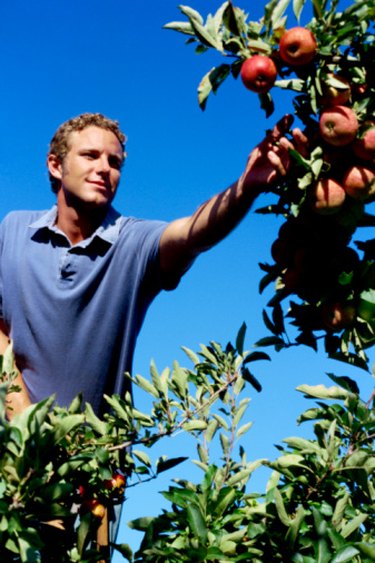
Fruit trees, including temperate plants such as apples, pears and cherries, and tropical trees, such as mangoes and citrus, are angiosperms that rely on flowers to reproduce. The life cycle of these trees starts with a seed.
Germination
Video of the Day
Seeds vary greatly in fruit trees, from the tiny apple seed to the large mango seed. The seed holds genetic material that, when conditions are good, begins to grow into a new tree.
Video of the Day
Growth
The fruit tree seed sprouts, using stored starches to grow, and then sends out roots that collect water and nutrients. Stems and leaves also grow, providing sugars for the tree through photosynthesis. The fruit tree matures over time and then reproduces.
Reproduction
Fruit trees flower to reproduce. In each flower are male anthers that make sperm-laden pollen and the female pistil, consisting of the stigma at the tip, the style and ovary at the base.
Pollination
Insect pollinators move the pollen from the anthers to the stigma. Sperm cells enter the stigma, travel through the style and into the ovary to fertilize the ovules inside.
Seed Development
The fertilized ovules become seeds. The ovary grows into a modified seed pod, with a thick wall around the seed. This wall is full of sugars that taste sweet and are good to eat.
Dispersal
Once the fruit ripens, it may be eaten by humans or animals, often dropping the seeds to the ground. After contacting the soil, the seeds germinate to restart the life cycle of the fruit tree.